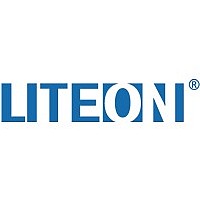HSDL-3210-021 Lite-On Electronics, HSDL-3210-021 Datasheet - Page 11

HSDL-3210-021
Manufacturer Part Number
HSDL-3210-021
Description
TXRX IR 1.15MBIT/S 3V MIR SMD
Manufacturer
Lite-On Electronics
Datasheet
1.HSDL-3210-021.pdf
(24 pages)
Specifications of HSDL-3210-021
Lead Free Status / Rohs Status
Contains lead / RoHS non-compliant
11
Reflow Profile
Figure 11. Reflow graph.
Process Zone
Heat Up
Solder Paste Dry
Solder Reflow
Cool Down
The reflow profile is a straight
line representation of a nominal
temperature profile for a convec-
tive reflow solder process. The
temperature profile is divided
into four process zones, each
with different T/ time tempera-
ture change rates. The T/ time
rates are detailed in the above
table. The temperatures are
measured at the component to
printed circuit board connections.
In process zone P1, the PC board
and HSDL-3210 castellation I/O
pins are heated to a temperature
of 125 C to activate the flux in
the solder paste. The temperature
ramp up rate, R1, is limited to
4 C per second to allow for even
heating of both the PC board and
HSDL-3210 castellation I/O pins.
230
200
183
170
150
125
100
50
25
0
HEAT
R1
UP
P1
50
Symbol
P1, R1
P2, R2
P3, R3
P3, R4
P4, R5
SOLDER PASTE DRY
R2
P2
100
t-TIME (SECONDS)
Process zone P2 should be of
sufficient time duration (> 60
seconds) to dry the solder paste.
The temperature is raised to a
level just below the liquidus point
of the solder, usually 170 C
(338 F).
Process zone P3 is the solder
reflow zone. In zone P3, the tem-
perature is quickly raised above
the liquidus point of solder to
230 C (446 F) for optimum
results. The dwell time above the
liquidus point of solder should be
between 15 and 90 seconds. It
usually takes about 15 seconds to
assure proper coalescing of the
solder balls into liquid solder and
the formation of good solder
connections. Beyond a dwell
time of 90 seconds, the inter-
25˚C to 125˚C
125˚C to 170˚C
170˚C to 230˚C (245˚C at 10 seconds max.)
230˚C to 170˚C
170˚C to 25˚C
150
T
R3
MAX. 245°C
REFLOW
SOLDER
90 sec.
ABOVE
183°C
MAX.
P3
200
R4
DOWN
COOL
P4
R5
250
300
metallic growth within the solder
connections becomes excessive,
resulting in the formation of weak
and unreliable connections. The
temperature is then rapidly
reduced to a point below the
solidus temperature of the solder,
usually 170 C (338 F), to allow
the solder within the connections
to freeze solid.
Process zone P4 is the cool down
after solder freeze. The cool
down rate, R5, from the liquidus
point of the solder to 25 C (77 F)
should not exceed –3 C per sec-
ond maximum. This limitation is
necessary to allow the PC board
and HSDL-3210 castellation I/O
pins to change dimensions
evenly, putting minimal stresses
on the HSDL-3210 transceiver.
Maximum T/ time
4˚C/s
0.5˚C/s
4˚C/s
–4˚C/s
–3˚C/s




















